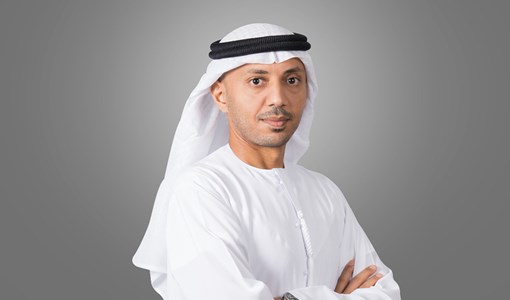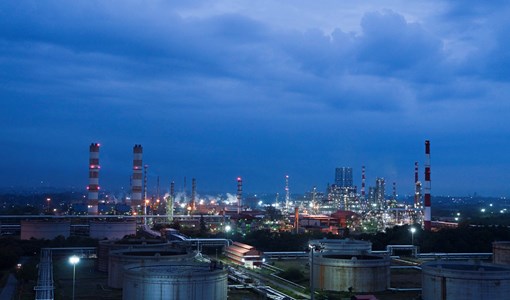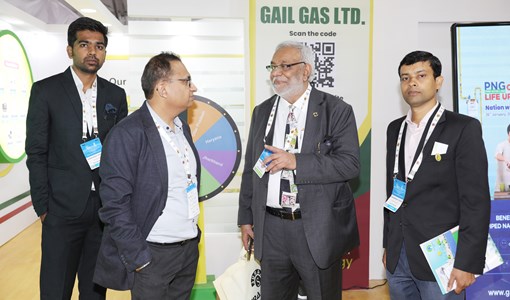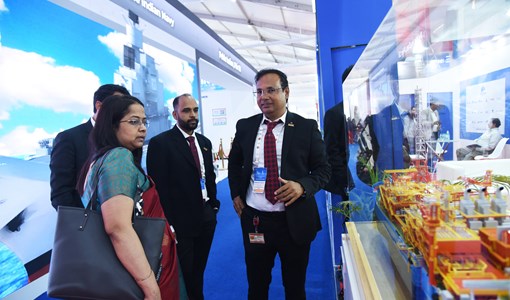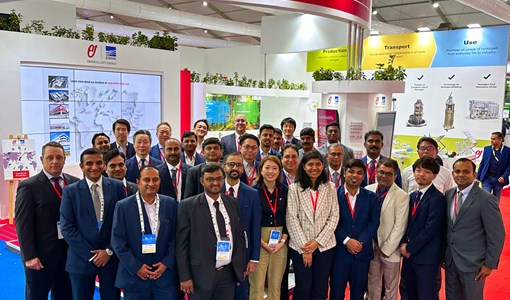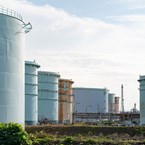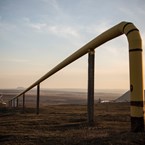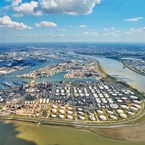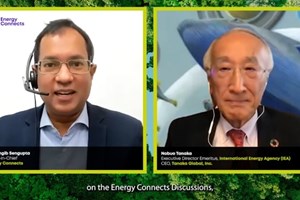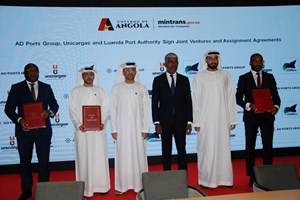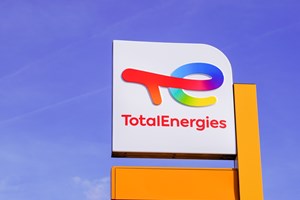Digital twins to play an important role in the changing industry landscape
Alistair Stubbs, Vice President of Asset Information & Reliability at Bentley Systems, spoke to Julian Walker about how the industry is changing in light of COVID-19 and how this will lead to greater digitalisation and the important role digital twins can play in all of this
The events surrounding the COVID-19 pandemic has had a massive impact on the oil and gas industry and will lead to a faster adoption of digital technology.
“I think it is a big transition time for the oil and gas industry. We are already seeing the shakeout from COVID. The industry is changing, efficiency is going to come to the forefront and COVID has given it an extra push. The next 6 months are going to be key,” said Stubbs.
Stubbs explained that one of the main things he is seeing in the market is a relentless push for digitalisation.
“This is a bit of a recognition that in many ways the oil and gas market doesn’t feel that they have taken advantage of the technology that is out there. The big shift is that the technology is there now for companies to take advantage of, and digital twins is one such technology.”
According to Stubbs, Bentley Systems’ core digital twin offering for the oil, gas and process manufacturing industries is PlantSight.
“PlantSight currently has three levels, for those that want to maintain the engineering information, then expand the range and depth of information in the digital twin (alignment and aggregation) and finally for those that want to operate their plant through the digital twin.”
He added: “Bentley’s digital twins is more than just a 3D image, and it has a much broader scope. We at Bentley push the plural for digital twins, because we feel different users will have different needs for digital twins; the uses for the process twin will be different from the uses for the production twin.”
Digitalisation impact
Greater digitalisation is having a big impact on the use of digital twins, as Stubbs explained.
“One big change brought on by digitalisation is that companies will now invest to keep a particular model updated and in order to keep the digital twin, whether it is a performance or condition one, up to date they will need to invest in the tools, technology and people to achieve that. With digitalisation oil and gas companies have realised that they can make huge efficiency gains from sites if they can have consistent access to reliable and up-to-date asset information through digital twins.”
Stubbs went into more detail about two aspects of digitalisation that is making a difference.
“Firstly, improvements to working smarter. This continues the trend that has been in the industry for a number of years where transitioning from a document centric way of working to data centric. This has continued and evolved to be ‘model centric’ where the model is broad in its interpretation. This is reducing friction and enabling speed in the supply chain when updating information about an operating plant. Digitalisation, however, remains focused in the engineering domain. The second element of digitalisation is the application of a wider digital twin in the day-to-day operations of a plant. Building on investments in edge devices, IOT and instrumentation, operations can apply digital twins to a lot of aspects of the business.”
Stubbs went into more detail on how Bentley looks at two levels where this can be used:
- a) At the first level, we are looking at the performance of equipment and systems in the plant to optimise maintenance and increase availability. Often called APM, this drives optimisation of the ability for an asset owner to make/produce product using the asset.
- b) At the second level we are looking at how to optimize the complete asset or even a portfolio of assets, aligning with things like market demand against the process plant’s ability to produce product, looking at trends, internally and externally.
“Both of these are strongly aligned with the application and use of ML/AI techniques – transitioning maintenance for example to predictive techniques, and in the operational context, optmising the use of raw materials or energy. They are all important measures of success in an industry that is under increasing external scrutiny,” he noted.
Digital twin successes
“We were very excited last year to see how many of our users’ projects submitted to the Year in Infrastructure Awards and shortlisted by external judges – cited the use of a digital twin. These projects took various forms, some related to driving efficiency of startup, for example Hatch in Africa, or in operations, the use of remote surveys to avoid the danger of having teams climbing radio towers in remote locations of Australia.
“For me, what this showed is the use of a digital twin is very varied and much dependent on the business or market challenges sought. While not oil and gas related, I think the inspection surveys for radio towers done with a drone has a lot of relevance in the oil and gas industry. Imagine improved fabrication, installation and maintenance of towers, flare stacks, and cranes. Again, avoiding the need for unnecessary working in remote locations, at height and other hazardous situations,” said Stubbs.
Challenges remain
Stubbs explained that Bentley is seeing challenges in a number of places relating to the adoption of digital twins and digitalisation in general.
“The key challenge is that this is not an IT project. Rather, the adoption of digital twins impacts potentially many areas of business. For example, commercially, traditional EPC contracts and milestone payments are driven by deliverables in document form. How does this need to change when the measure of progress might be much more granular and based around data and quality of data? So when adopting digital twins there needs to be broad alignment across a much wider part of the business as well as new ways of working. However, the benefits are very significant.”
In fact, Stubbs feels that cloud technology could make a huge difference.
“The cloud makes solutions more accessible to a wider range of people. For example, for a user of ours who operates FPSO vessels off shore with limited connectivity, as well as onshore engineering support, we have been able to provide a hybrid cloud and on- vessel solution to ensure everyone has access to the information they need all the time.”
Ever-important ROI
Stubbs went on to talk about how Bentley has worked with the global consultant McKinsey to develop a maturity assessment.
“This process can help an organisation assess their current position on a journey to achieving digitalisation and to prioritise the best next steps. This gives a structured process that any organisation can adopt to measure their progress and calculate an ROI robustly. Additionally, the research for this, combined with proven figures coming from our Year in Infrastructure submissions has given us some fascinating insight into what organisations are measuring and achieving – the benefits are significant and increasingly proven.
He added: “We are seeing our users report savings in OPEX ranging from 10-40 per cent. Some of the more interesting examples are the stories around improved safety.”
Stubbs explained that while the industry has been talking about TOTEX as a target for a number of years “the availability of digitalisation and digital twins are now making what was a previously intangible benefit that was hard to prove and qualify, increasingly tangible and demonstrated – alignment across the supply chain and lifecycle is going to unlock a new generation of opportunity for the industry – vital as we now enter a phase of new reality brought on by environmental and energy transition.”
Digital Twins outlook
“I think more companies will be looking at digital twins. I feel we are seeing the coming together of a number of different forces in the market that has created a tipping point for greater digitalisation, and we are just at the start of it,” said Stubbs.
He concluded: “Coming out of COVID we will see a significant change to how a lot of owners operate their assets. I think it will be interesting to see in the next few months, as operations start to return to normal, what this normal will look like.”
KEEPING THE ENERGY INDUSTRY CONNECTED
Subscribe to our newsletter and get the best of Energy Connects directly to your inbox each week.
By subscribing, you agree to the processing of your personal data by dmg events as described in the Privacy Policy.
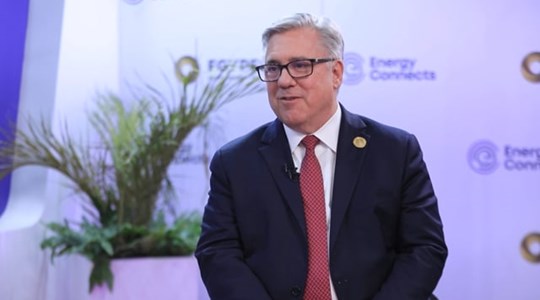
Chevron helping drive Egypt’s journey to become Africa’s energy powerhouse
Mar 11, 2024
Energy Workforce helps bridge the gender gap in the industry
Mar 08, 2024
EGYPES Climatech champion on a mission to combat climate change
Mar 04, 2024
Fertiglobe’s sustainability journey
Feb 29, 2024
P&O Maritime Logistics pushing for greater decarbonisation
Feb 27, 2024
India’s energy sector presents lucrative opportunities for global companies
Jan 31, 2024
Oil India charts the course to ambitious energy growth
Jan 25, 2024
Maritime sector is stepping up to the challenges of decarbonisation
Jan 08, 2024
COP28: turning transition challenges into clean energy opportunities
Dec 08, 2023
Why 2030 is a pivotal year in the race to net zero
Oct 26, 2023Partner content

Ebara Elliott Energy offers a range of products for a sustainable energy economy

Essar outlines how its CBM contribution is bolstering for India’s energy landscape

Positioning petrochemicals market in the emerging circular economy

Navigating markets and creating significant regional opportunities with Spectrum




